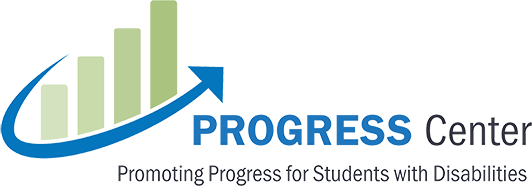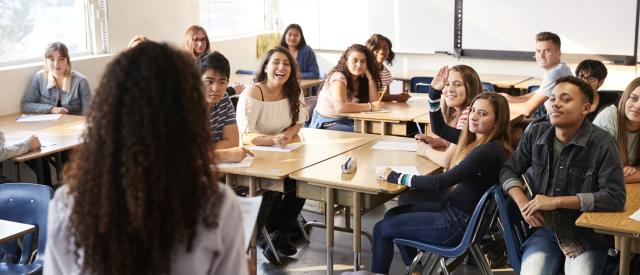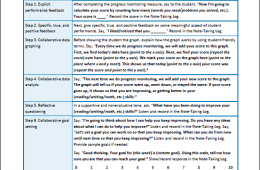Implementation
The success of students with disabilities depends on the implementation of high-quality instruction, interventions, and services outlined in the individualized education program (IEP). We know that effective implementation relies on educators and families using ongoing data to collaboratively problem solve and refine supports to meet the unique needs of the child. While barriers do exist, we know that educators can prevent or overcome these barriers by implementing infrastructure supports that ensure educators have access to evidence-based practices and assessments, high expectations for students, clear processes for decision making and collaborative teaming, and ongoing professional learning.
The sections below highlight key implementation considerations and resources to support implementation.
Effective Delivery of Services and Instruction
Educators should use evidence-based practices and service delivery approaches to implement specially designed instruction, supplemental aids and services, and related services outlined in the IEP. Schoolwide, multi-tiered system of supports can provide educators the infrastructure necessary for delivering high-quality core programming, providing access to evidence-based interventions, and implementing validated processes for using data to individualize supports for students. When delivering services and instruction, educators should ensure program implementation fidelity, with attention to adherence, quality, dosage, program specificity, and student engagement.
Highlighted Resources
This collection of instructional briefs highlights six evidence-based, high-leverage practices that research has shown support implementation of high-quality instructional programming for students with and at risk for disabilities regardless of their identified disability category or grade span.
Fact Sheet
Intensive Intervention Course Content: Features of Explicit Instruction
This four part course is designed to support faculty and professional development providers with instructing pre-service and in-service educators who are developing and/or refining their implementation of explicit instruction.
Online Module
MTSS for All: Including Students with the Most Significant Cognitive Disabilities
This brief provides suggestions for ways in which the Multi-Tiered System of Supports (MTSS), a framework for organizing and implementing a tiered instructional continuum to support learning for all students, can include students with the most significant cognitive disabilities.
Research Report
Belonging
Students learn best and are the most successful when they are welcomed and feel a sense of belonging at school. Belonging is experienced when students are present, invited, welcomed, known, accepted, involved, supported, heard, befriended, and needed.
Highlighted Resources
Ten Ways Schools Can Foster Belonging Among Students With and Without Disabilities
This webinar features Dr. Erik Carter sharing 10 dimensions of belonging, and the importance of fostering belonging for all students in our schools and classrooms, including students with disabilities.
Webinar
Stories from the Classroom: Finding Belonging
This video highlights how important it is for a student with a disability to feel included in a significant and meaningful way at school
Video
Creating Communities of Belonging for Students with Significant Cognitive Disabilities
This resource from the TIES Center was developed by Erik Carter and Elizabeth Biggs to highlight how schools can create a place of belonging for every student, with a specific focus on students with significant cognitive disabilities.
User Guide
Data Collection and Analysis for Continuous Improvement
Collection and analysis of progress monitoring data are necessary for understanding how students are progressing towards ambitious IEP goals. These data, along with other data sources, can support ongoing instructional decision making across the continuum of supports and assist teams in evaluating the effectiveness of IEP implementation. Data also help teams communicate about student progress and individual student needs with other educators, families, and the student.
Highlighted Resources
Progress Monitoring: Mathematics & Reading
These modules introduce users to progress monitoring in reading and mathematics. Progress monitoring is a type of formative assessment in which student learning is evaluated to provide useful feedback about performance to both learners and teachers.
Online Module
Selecting Progress Monitoring Tools: Academic and Behavior Progress Monitoring Tools Charts
The academic progress monitoring and behavior progress monitoring tools charts are designed to assist educators and families in becoming informed consumers who can select academic and behavioral progress monitoring tools.
Tools
Six-Step Instructional Routine for Engaging Students in Progress Monitoring
This six-step instructional routine offers a quick reference guide that enhances typical progress monitoring procedures by engaging students in progress monitoring. The instructional routine includes a review of necessary materials and sample scripts that teachers can use following each progress monitoring session. The companion note-taking log & fidelity checklist provides a place to take notes and monitor the implementation of the six-step protocol.
Tools
Student Intervention Implementation Log
This log can be used as a daily and weekly record of your implementation of an individual student’s intensive intervention plan or specially designed instruction. This information, along with progress monitoring graphs, can inform team intervention and data review meetings.
Tools
Ongoing Teaming and Collaboration
While collaboration and teaming are required for the development of an IEP, they are even more critical for successful implementation of high-quality education programming. Team members may formally and informally convene throughout the school year to monitor and refine program implementation based on data. The team members may vary based on student need and context but will include those working with the student as well as those with expertise related to individual student’s needs. Schools should have in place validated processes and infrastructure necessary for effective teaming and collaboration.
Highlighted Resources
Tools to Support Intensive Intervention Data Meetings
This series of data meeting tools are developed to support individualized problem-solving teams for students with severe and persistent learning and behavioral needs. The collection includes sample agendas, facilitation materials, participant guides, note-taking templates, and decision-making tools for initial and ongoing data meetings.
Tools
Secondary Transition: Interagency Collaboration
This module defines and discusses the purpose of interagency collaboration and addresses the importance of partnering with agencies to improve outcomes for students with disabilities who are transitioning from high school.
Online Module
This tip sheet focuses on the importance of implementing regular team meetings that include related service providers to tap into and maximize the expertise of all team members in supporting students with significant communication needs in an inclusive setting.
Fact Sheet
Family Engagement
Did you know that families play important roles in both the development and implementation of the high-quality educational programming? Not only can they help teachers understand home factors that might influence a child’s success, but they can serve as thought partners when students are not benefiting from the IEP as expected or they can enhance learning by implementing supplemental activities at home. Educators must build positive relationships with families and recognize and foster critical partnerships with parents and families to meet the student’s needs and build upon the strength and experience of the family.
Highlighted Resources
This module is designed to help teachers build positive relationships with families. It highlights the diversity of families and addresses the factors that school personnel should understand about working with the families of children with disabilities .
Online Module
This series of five interactive self-directed courses provide families and educators with a number of strategies for working together and through conflict.
Online Module
Support for Educators
Educators will need ongoing support, including professional learning and access to resources, to implement high-quality educational programming for students with disabilities. These supports may include ongoing training and coaching on practices to support all students with disabilities as well individual educator supports needed to implement specific components of a child’s IEP, such as a new evidence-based practice, accommodations and modifications, or assistive technology. Educators can draw from freely available resources from the IRIS Center, CEEDAR Center, and National Center on Intensive Intervention, and other OSEP Technical Assistance and Dissemination Centers.



